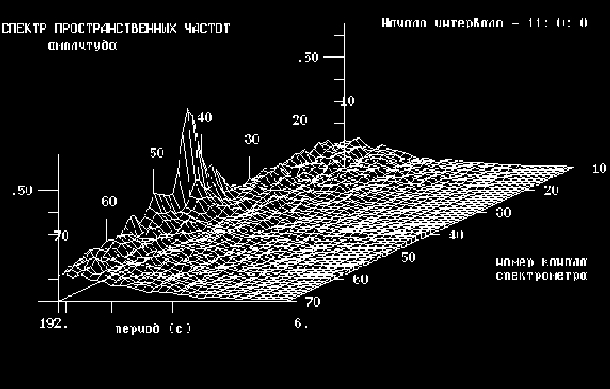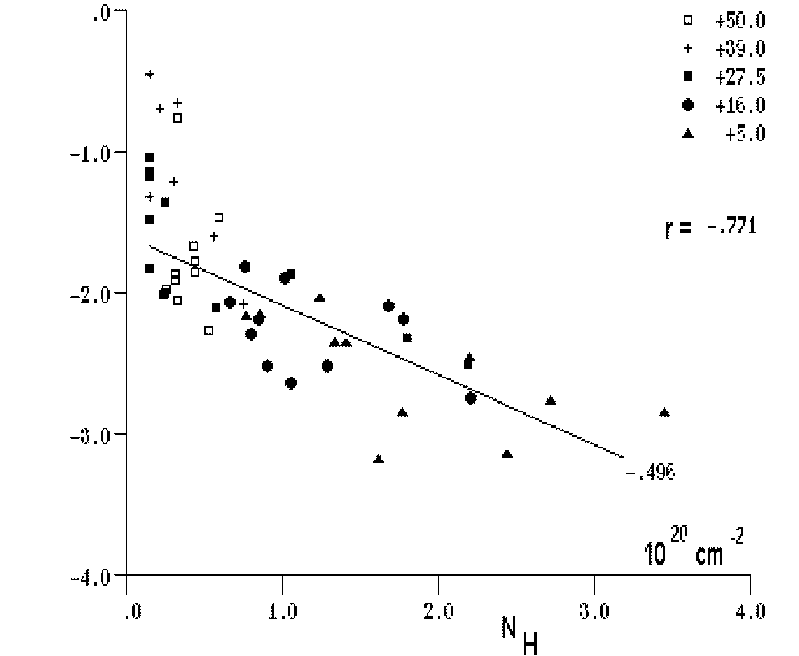|
Angular structure of the interstellar HI emission at 21 cm was investigated on the declinations of +5 degree, +16 dg., +27.5 dg., +39 dg. and +50 dg. in the R.A. range of 10h to 16h (galactic latitudes from 45 dg to 90 dg) with the help of RATAN-600 radio telescope with mean angular resolution 2.0'x 20'. Velocity resolution is 6.3 km/s, r.m.s. noise fluctuation of antenna temperature is 0.1 K . Large scale structure was removed with high frequency filter. Angular power spectrum of interstellar HI emission was computed with standard FFT code and smoothed over 1h along R.A. (figure 1). It is found that the latitude dependence of integral characteristics of HI emission (column density and r.m.s. fluctuation of Ta) are consistent with plain layer gas distribution. In the region of 11h < alpha < 13h, 27 dg. < delta < 39 dg. column gas density is lower than 1.5x1019 cm-2, i.e. lower than the sensitivity level. HI spatial power spectra in the region investigated in the range of angular periods between 10' and 6 degree looks like power linear with indexes from -3 to -0.7 and on the average with lower HI column density the spectrum becames more plane (figure 2). 
Figure 1. An example of the angular power spectrum amplitudes HI in the linear scale for different spectrometer channels. For clarity the angular frequency axe is marked by periods along right ascension in seconds. 
Figure 2. The dependence of HI spatial power spectrum indexes from HI content on the line of sight. |